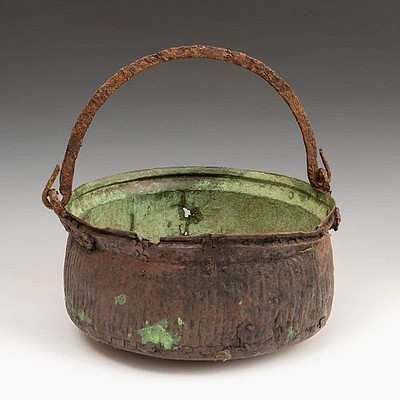Goddess Isis suckling Harpocrates. Ancient Egypt, Lower Epoch, 664-323 B.C. Shale.
Lot 72
About Seller
Setdart Auction House
Carrer Aragó 346
Barcelona
Spain
Setdart Subastas was born in 2004 and is currently the first online art auction in Spain with solidity, prestige and reliability guaranteed by our more than 60,000 users. Setdart has a young, dynamic and enterprising team ready to successfully manage the purchase and sale of art works through custom...Read more
Estimate:
EUR€13,000 - EUR€15,000
$13,978.49 - $16,129.03
Absentee vs Live bid
Two ways to bid:
- Leave a max absentee bid and the platform will bid on your behalf up to your maximum bid during the live auction.
- Bid live during the auction and your bids will be submitted real-time to the auctioneer.
Bid Increments
| Price | Bid Increment |
|---|---|
| EUR€0 | EUR€10 |
| EUR€200 | EUR€25 |
| EUR€500 | EUR€50 |
| EUR€1,000 | EUR€100 |
| EUR€3,000 | EUR€200 |
| EUR€5,000 | EUR€500 |
| EUR€10,000 | EUR€1,000 |
| EUR€20,000 | EUR€2,000 |
| EUR€50,000 | EUR€5,000 |
About Auction
By Setdart Auction House
Dec 22, 2021
Set Reminder
2021-12-22 08:30:00
2021-12-22 08:30:00
America/New_York
Bidsquare
Bidsquare : Archaeology, Session I
https://www.bidsquare.com/auctions/setdart-auction-house/archaeology-session-i-8050
Setdart Auction House sofia@setdart.com
Setdart Auction House sofia@setdart.com
- Lot Description
Goddess Isis suckling Harpocrates. Ancient Egypt, Lower Epoch, 664-323 B.C. Shale. Provenance: Private collection, London. Acquired at auction in Munich in 2014. Private collection Zurich (Switzerland), acquired in 2003 from the Galerie Cybele, Paris (France). Publications: ARC Auction 13, Antiquities, Munich, October 30, 2014, lot 178. In good state of preservation, without restorations. It has lost the crown and part of his right arm with which he held Harpocrates. Measurements: 18 cm. Isis is part of the Osirian triad with her husband Osiris and her son Horus, called great magician, great mother goddess and queen of the gods, considered fertilizing force of nature and goddess of motherhood and birth. Her main iconographic symbol is the throne, although she can also be represented with a headdress with the solar disk, for being the daughter of Ra, and with dove wings. She can also take the form of a tree, as a nurturing goddess. From the beginning of the XVIII dynasty she will also be represented with the horns and the moon of Hathor, the Ankh and other symbols. A widespread iconography of Isis presents her with Harpocrates, infant form of Horus, on her lap. Harpocrates symbolizes the weak sun of dawn or the winter sun, naked and unprotected. Just as this sun is transformed into a powerful star, the weak child will become the adult Horus, armed and warrior, who will avenge the death of his father, Osiris. The piece in question has been made in schist, a material widely used for the realization of sculptures in Ancient Egypt due to its relative hardness.
- Shipping Info
-
In-house shipping available. Please inquire at admin@setdart.com.
-
- Buyer's Premium



 EUR
EUR CAD
CAD AUD
AUD GBP
GBP MXN
MXN HKD
HKD CNY
CNY MYR
MYR SEK
SEK SGD
SGD CHF
CHF THB
THB














